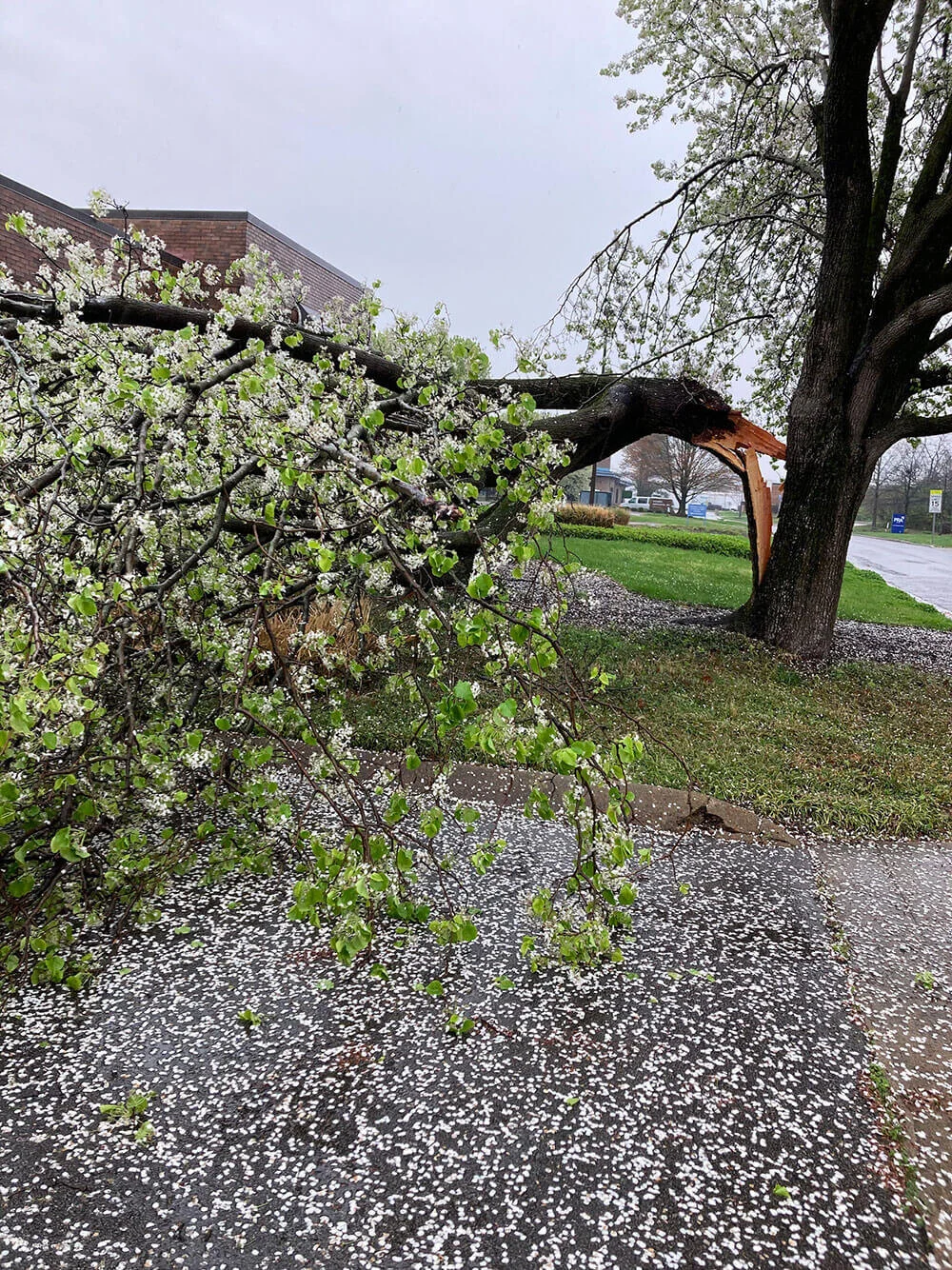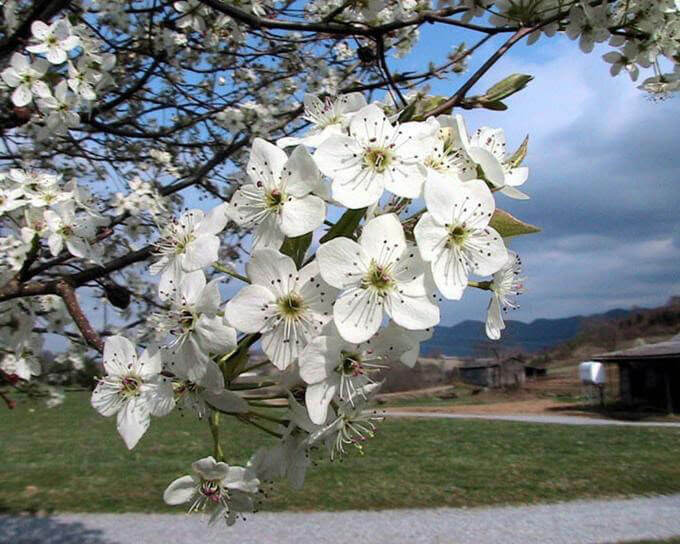Why Nashvillians Should Cut Down Bradford Pear Trees
What to Know About Bradford Pear Trees
Not the Pear You Want in Your Yard
The Bradford pear tree is a tall, thin tree with white flowers, now a familiar sight across Tennessee. While the flowers look great, it produces bad-smelling berries, countering the visual benefits we get from the tree. Deeper problems with the tree as an invasive species result from its runaway propagation, including crowding out native plants and not being a host to native insects. It is also a fragile tree, and when grown in open-air yards, a Bradford Pear is prone to weak branches. It’s chosen by landscapers and homeowners as ornamental, but the tree has become an unpleasant and harmful presence. If you have one in your yard, learning why the tree is a problem is the best way to combat its spread.
A Bradford pear tree in Nashville lies split apart after a spring storm.
A Bradford’s Botany
This variety of pear tree, Pyrus (Latin for pear) calleryana, is originally from China. The Callery (Bradford) Pear is similar to the more common European Pear, Pyrus communis, but doesn’t produce a fruit edible for humans, although birds do eat them. This is how the tree spreads unchecked: many birds eat the berries, depositing the seeds randomly across ecosystems and communities. The Bradford Pear is a shallow-rooted tree and tolerates most types of soil and water conditions. It typically grows to a height of 40 or 50 feet and lives for 15-25 years.
Why Is This Tree so Undesirable?
The Bradford pear tree is considered aggressively invasive and is included in the Tennessee Invasive Plant Council’s Invasive Plants of Tennessee List. Spread from yards into natural areas by birds, the tree’s tolerance of different environments allows it to survive. Its early blooming time is also a factor in its spread, since it revives early in the spring before many other plants. As the tree’s leaves open up, it casts shade below and doesn’t allow smaller trees, grasses or other plants to get the sunlight they need to grow.
Bradford pear trees don’t host native insects, which is a problem for bird populations that depend on insects like caterpillars in their diets. This is also detrimental to the area-wide pollination needs of other plants. The tree has shallow roots, which don’t hold soil as well as trees whose deep roots create a structure for soil to withstand rains and wind from erosion. A shorter lifespan usually means shorter generational turnover, so the tree can spread relatively quickly when uncontrolled.
A close up of the Bradford pear tree blossom.
In addition to ecological problems, a weak structural soundness makes this tree prone to damage in storms. The thin limbs have weak branch unions, and as they grow and bear more weight, the connection to the trunk will snap under enough wind or pressure. Since these trees do grow to impressive heights, the risk of injury to people or property from a broken branch can be serious. Because of these dangers, some residential and commercial developments where Bradford pear trees were planted en masse years ago have chosen to remove them entirely.
A less dangerous downside of the tree is its fruit’s rotting odor, which attracts flies, one of its main pollinators. Like those of the Gingko, these bad-smelling fruits can be a nuisance, but unlike the Ginkgo, a Bradford Pear’s effect on the Tennessee environment is mostly negative.
How to Deal With a Bradford Pear Tree
The best way to deal with a Bradford pear tree is to remove it, and the next best thing you can do is choose not to plant one. There are many native alternatives that are just as beautiful, healthier for ecosystems and ultimately more beneficial for us all. Native alternatives include tulip trees, magnolias, serviceberries and flowering dogwoods. If you want a pear tree that actually gives you pears, there are many species that are appropriate for Tennessee’s planting zones, grow similar white flowers and produce a sweet, edible fruit.
If you have a Bradford Pear in your yard, you have two choices for removing it: If the tree is small enough and you have the ability and equipment, cut it down yourself and treat the stump with an herbicide to prevent it from re-sprouting. If you’re not able to remove the tree yourself, hire a certified arborist to provide the service. After your Bradford pear tree is gone, you’ll be ready to replace it with a native species! Consider one of these beautiful, flowering understory trees to plant instead of the Bradford pear:
Dogwood
Serviceberry
Redbud
American Plum
Cherry
Want to find out more information about tree care? Subscribe to our newsletter!


